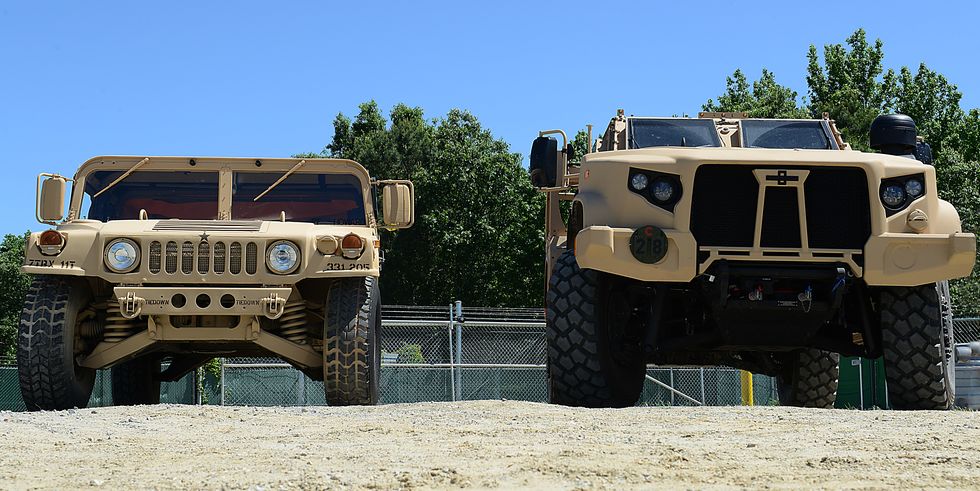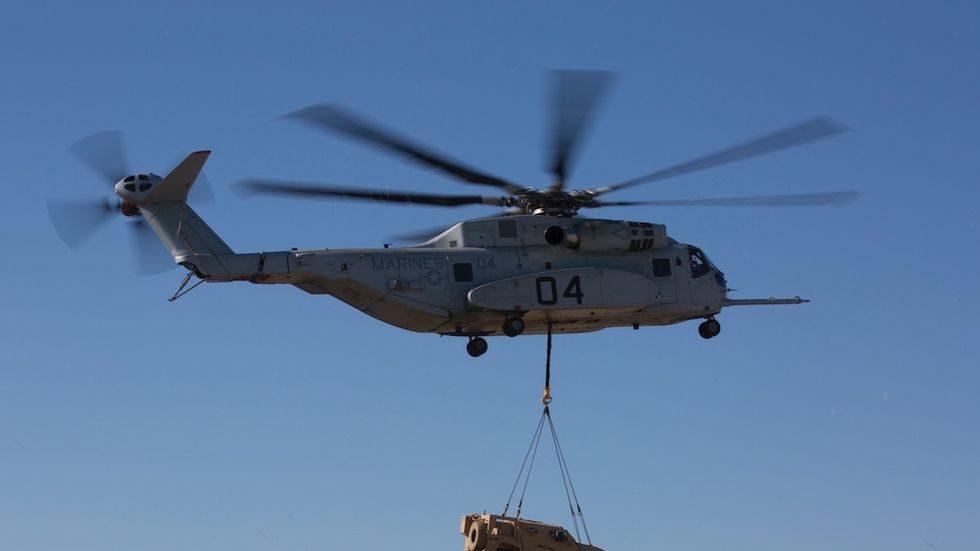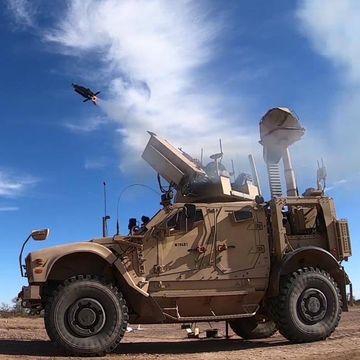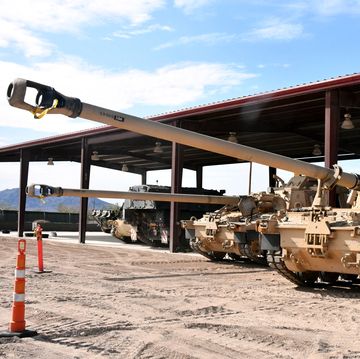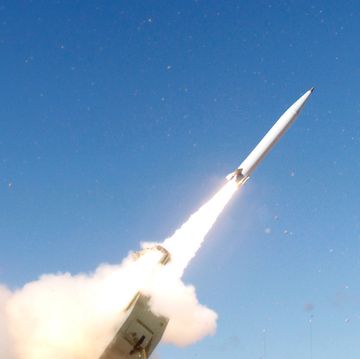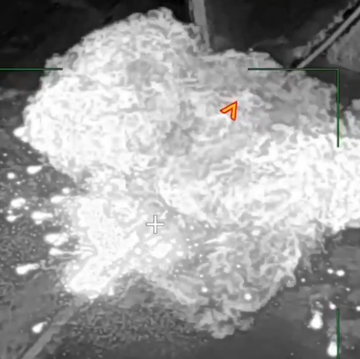According to the Pentagon's in-house watchdog, the replacement for the U.S. military’s Humvee is in serious trouble.
The new Joint Tactical Light Vehicle (JLTV) is “not operationally suitable” because of deficiencies in “reliability, maintainability, training, manuals, crew situational awareness, and safety,” a new report says. The vehicle is so bug-ridden that it requires contractors in the field to fix problems, and is so large and loud that it's easily detectable on the battlefield.
Defects To Go Around
Back in the 1980s, the U.S. Army introduced the High Mobility Multipurpose Vehicle—the Humvee. Designed to replace Jeep-type vehicles from the WWII and Korea Era, the Humvee had a V8 diesel engine, an automatic transmission, and was considerably larger than the vehicles it replaced. Although the Humvee thrived during many years peacetime, it suffered mightily during the wars in Iraq and Afghanistan, when the hulking vehicle was on the receiving end of ambushes and improvised explosive device attacks. These attacks highlighted the vehicle’s lack of armor protection, particularly against buried explosives.
The Humvee’s replacement, JLTV, is a beefy ride that's even larger than the Humvee. The JLTV is designed to keep crews safe against direct fire and IED attacks while providing power for onboard systems such as jammers and tracking systems. The JLTV comes in four versions, including unarmed General Purpose and Utility/Shelter Carrier vehicles, Heavy Guns Carrier vehicles armed with Mk.19 or .50 caliber machine guns, and a Close Combat Weapons Carrier equipped with TOW anti-tank missiles.
But all is not well in the vehicle's development. In an annual report on major weapons systems, the Pentagon’s Operational Test & Evaluation (OT&E) office seriously criticizes the JLTV, which is currently undergoing evaluation with Army and Marine Corps units. First reported by Stars and Stripes, the OT&E report says all four versions of of the vehicle are not operationally suitable, with a combination of defects, design problems, and inadequate contractor training support.
Like any new product, the JLTV has its share of defects. All four vehicle types are encountering mechanical problems during field trials including, “engine wiring problems, flat and damaged tires, and break (sic) system faults." A “health monitoring system” designed to bring problems to the attention of maintainers is not accurate and “reduces crew and maintainer confidence in the system.” One last mechanical problem: The doors on some vehicles didn’t work.
The list of design flaws goes on. The vehicles are faulted for having a “large visual and loud aural signature, increasing detectability.” The DOT&E also complains that troops riding inside have poor visibility and that the TOW anti-tank missile launcher, capable of destroying tanks to ranges of up to 2.48 miles, is slow and difficult to reload. Furthermore, the vehicles are so large fewer of them can fit on the military’s Maritime Prepositioned Force ships, cargo ships that carry floating arsenals of Army and Marine Corps equipment, ready to link up with ground troops and quickly enter battle.
Other problems including training programs for mechanics that were “not effective” and required additional training to get mechanics up to speed on the vehicle’s problems. Training manuals for maintainers were, “not detailed, incorrect, and lacked steps to troubleshoot problems.”
It's Not As Bad As It Seems?
Despite that long list of woes, the report does conclude that the JLTVs are “operationally effective.” Which is to say, they can accomplish their missions as designed, when they work. So there’s that.
And most of the JLTV’s defects, such as the brake issue, don’t sound particularly difficult to fix. Although the need for contractors to fix vehicles in the field sounds ominous, it also sounds like once the vehicle’s issues are solved, contractors will no longer be needed. In some cases, sophisticated military equipment may need on-the-ground contractor support for the lifetime of the system.
Here's something else to consider: Many of these problems are really just design trade-offs, and the services will just have to learn to live with them. For example, the poor visibility issue and the increased “aural and visual detectability” is probably a result of adding extra armor to deal with a more lethal battlefield. A smaller, less armored vehicle could have better situational awareness and attract less attention in a war zone. It also wouldn't be as good at protecting its crews.
The Pentagon expects to purchase at least 60,000 JLTVs of all flavors, including 49,099 JLTVs for the Army, 9,091 for the Marines, and up to 3,270 for the Air Force. The British Army is looking to buy 2,747 vehicles and there will almost certainly be additional foreign sales once the vehicle goes into full production.
The JLTV is a new vehicle and it will take time to get problems sorted. The vehicle it replaces, the Humvee, experienced its share of problems early on but evolved into a good tactical vehicle. The services can’t ignore any problems in what will be a ubiquitous vehicle--after all, generals ride in them too.

Kyle Mizokami is a writer on defense and security issues and has been at Popular Mechanics since 2015. If it involves explosions or projectiles, he's generally in favor of it. Kyle’s articles have appeared at The Daily Beast, U.S. Naval Institute News, The Diplomat, Foreign Policy, Combat Aircraft Monthly, VICE News, and others. He lives in San Francisco.

